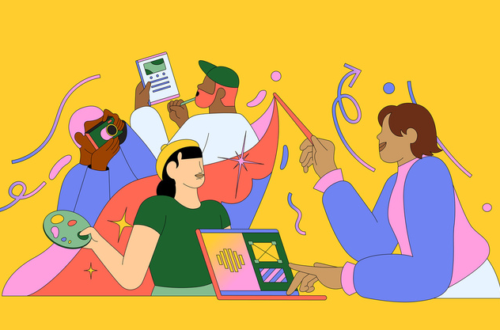
Process Post #7
Seeing is believing?
The deep popularization of the Internet has accelerated the arrival of the information age, helping everyone in the network to create information at any time or become a node in the way of information transmission. This convenience of obtaining, creating, and disseminating information has changed the one-to-many model of traditional media and brought significant challenges to human society: the false news and information in the network are increasing. Therefore, improving the digital literacy of individuals is more and more urgent.
If you took CMNS 202, you’ve probably learned how to spot fake news and the 10 Fake News Detection questions (if you haven’t, see the details below).
How to spot fake news
10 questions for fake news detection
- consider the source: click away from the story to investigate the site, its mission and its contact info.
- Read beyond: headlines can be outrageous in an effort to get clicks. What’s the whole story?
- Check the author: Are they credible? Are they real?
- Supporting sources? Click on those links. Determine if the info given actually supports the story.
- Check the date: reposting old news stories doesn’t mean: they’re relevant to current events.
- Is it a joke? if it is too outlandish, it might be-satire. Research the site and author to be sure.
- Check your biases: consider if your own beliefs could affect your judgement.
- Ask the experts: ask a librarian, or consult a fact-checking site.
- Gauge Your Emotional Reaction
- Where did you encounter this information?
- Consider the Headline: Exclamation Points and Capital Letters are a warning sign
- Is it designed for Sharing?
- Consider the Source: Do you see an author byline? How is the website described?
- Is there a current date on the information?
- Are other news sources cited? Experts?
- Does it link to quality sources?
- Can you confirm images are accurate?
- If you search for it on a fact checking website, does it claim that it is false?
Do you feel like you’ve developed the ability to spot false information?
Then please take a look at the video below:
This is not Tom Cruise
— Damian Burns (@damianburns) February 26, 2021
This is a deep fake
This probably isn't great news for Cameo pic.twitter.com/CqkzNOAFQp
What do you see? Tom Cruise playing golf?
What if I said the guy in the video wasn’t Tom Cruise at all? Would you believe it?
Believe it or not, the man in the video is not Tom Cruise but was created by Deep Fake.
It’s hard for ordinary people to discover whether these videos are real or fake when faced with such powerful technology. Regarding this phenomenon, Ian Goodfellow states :
It’s been a little bit of a fluke, historically, that we’re able to rely on videos as evidence that something really happened.”
Indeed, we’ve even been judging things by Seeing is Believing. We trust our eyes impossibly, but as these technologies continue to advance, we could soon be living in a world where our eyes often deceive us.
Reference:
Anis Rahman, 2020, Doing Documentary Research.
Gilbert, David. (March 3, 2021). “Here’s How Worried You Should Be About Those Tom Cruise Deepfakes“.
Foer, Frank. May, 2018. “The Era of Fake Video Begins.” The Atlantic.
You May Also Like

Process Post #4
February 27, 2022
Process Post #2
February 26, 2022
One Comment
Pingback: